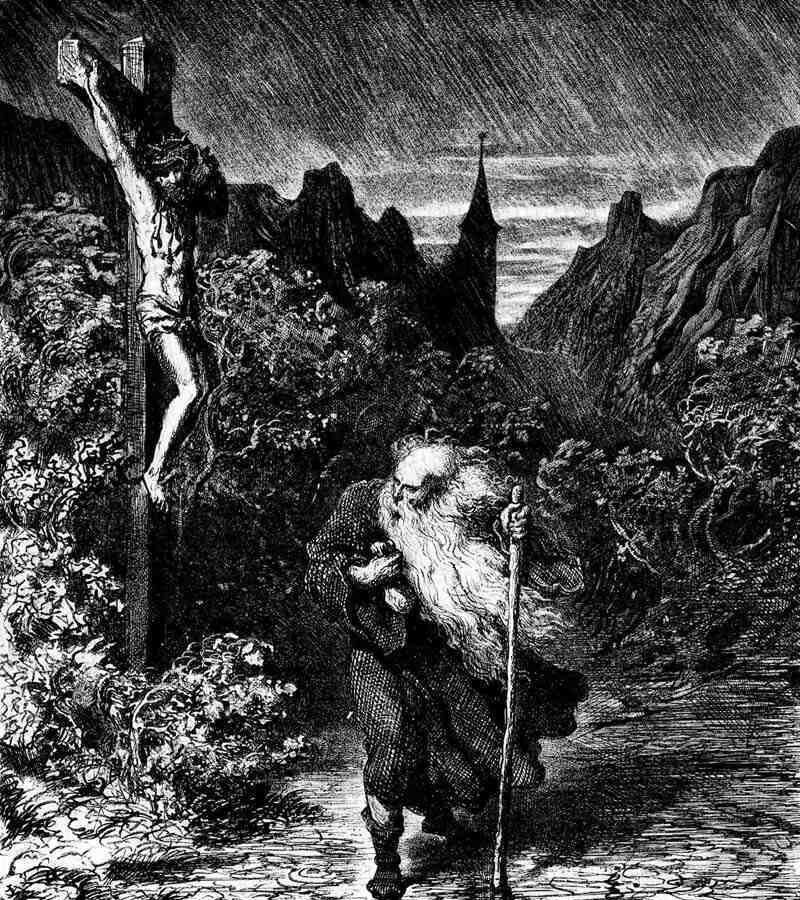Tzfat is a city in the Northern District of Israel. Located at an elevation of…
#06 Stop being a “Wandering Jew” and a “stranger in a strange land”
The Wandering Jew is a mythical immortal man whose legend began to spread in Europe in the 13th century. In the original legend, a Jew who taunted Jesus on the way to the Crucifixion was then cursed to walk the Earth until the Second Coming. The exact nature of the wanderer’s indiscretion varies in different versions of the tale, as do aspects of his character; sometimes he is said to be a shoemaker or other tradesman, while sometimes he is the doorman at the estate of Pontius Pilate.
By the beginning of the eighteenth century, the figure of the “Wandering Jew” as a legendary individual had begun to be identified with the fate of the Jewish people as a whole. After the ascendancy of Napoleon Bonaparte at the end of the century and the emancipating reforms in European countries connected with the policy of Napoleon and the Jews, the “Eternal Jew” became an increasingly “symbolic … and universal character” as the continuing struggle for Jewish emancipation in Prussia and elsewhere in Europe in the course of the nineteenth century gave rise to what came to be referred to as “the Jewish Question”.
Before Kaulbach’s mural replica of his painting Titus destroying Jerusalem had been commissioned by the King of Prussia in 1842 for the projected Neues Museum, Berlin, Gabriel Riesser’s essay “Stellung der Bekenner des mosaischen Glaubens in Deutschland” (“On the Position of Confessors of the Mosaic Faith in Germany”) had been published in 1831 and the journal Der Jude, periodische Blätter für Religions und Gewissensfreiheit (The Jew, Periodical for Freedom of Religion and Thought) had been founded in 1832. In 1840 Kaulbach himself had published a booklet of Explanations identifying the main figures for his projected painting, including that of the Eternal Jew in flight as an outcast for having rejected Christ. In 1843 Bruno Bauer’s book The Jewish Question was published to which Karl Marx responded by an article with the title “On the Jewish Question”.
The wandering eternal Jew (Le Juif Eternel), coloured woodcut, later shown at the Nazi exhibition Der ewige Jude in Germany and Austria 1937–1938. Shown here is a reproduction at an exhibition at Yad Vashem, 2007.
A caricature which had first appeared in a French publication in 1852, depicting the legendary figure with “a red cross on his forehead, spindly legs and arms, huge nose and blowing hair, and staff in hand”, was co-opted by anti-Semites. It was shown at the Nazi exhibition Der ewige Jude in Germany and Austria in 1937–1938. A reproduction of it was exhibited at Yad Vashem in 2007.
The exhibition had been held at the Library of the German Museum in Munich from 8 November 1937 to 31 January 1938 showing works that the Nazis considered to be “degenerate art”. A book containing images of these works was published under the title The Eternal Jew. It had been preceded by other such exhibitions in Mannheim, Karlsruhe, Dresden, Berlin and Vienna. The works of art displayed at these exhibitions were generally executed by avant-garde artists who had become recognized and esteemed in the 1920s, but the objective of the exhibitions was not to present the works as worthy of admiration but to deride and condemn them.




